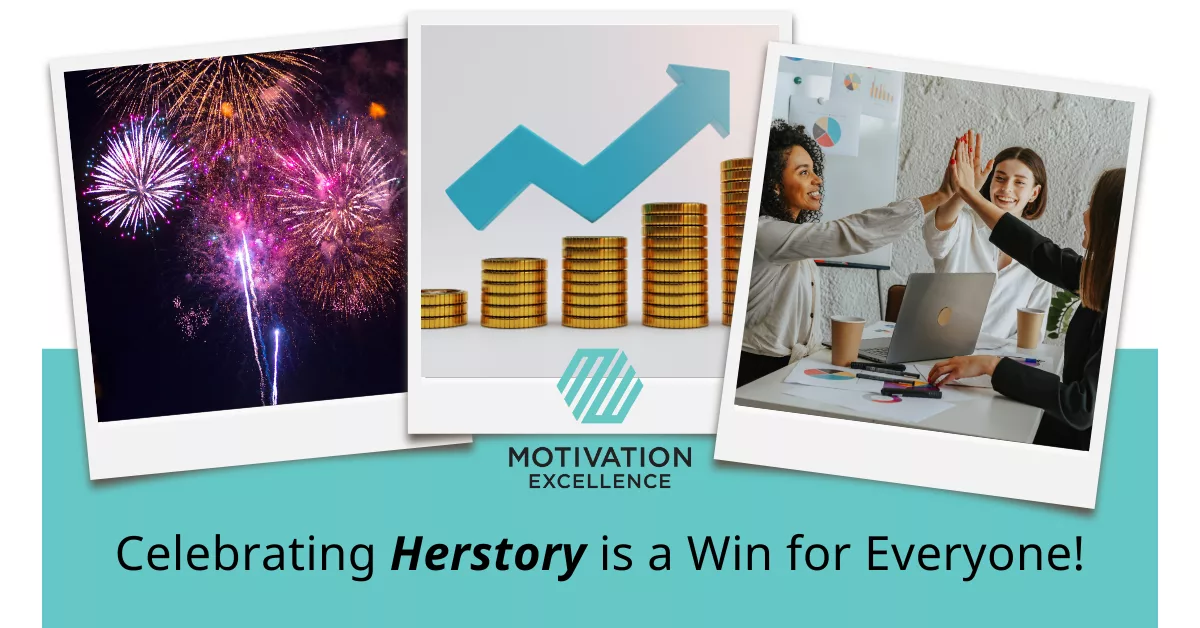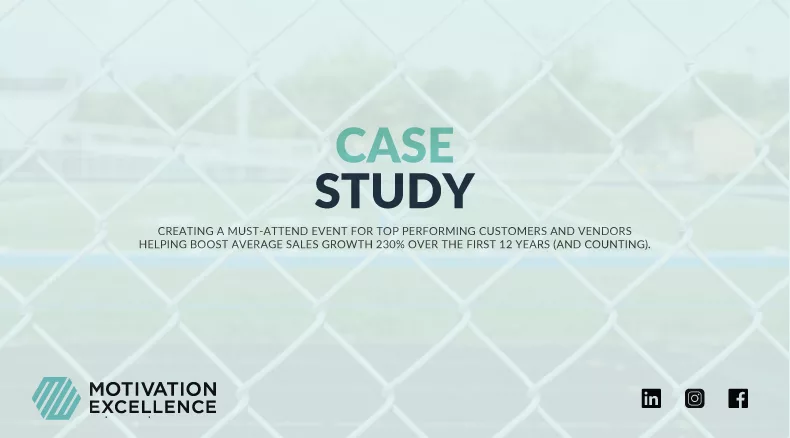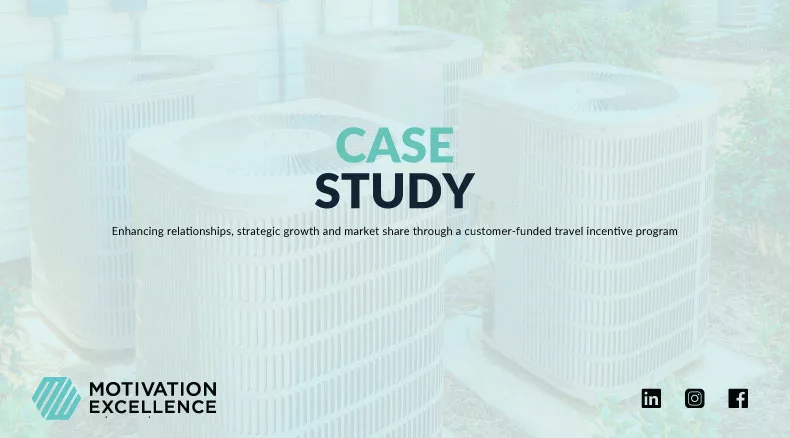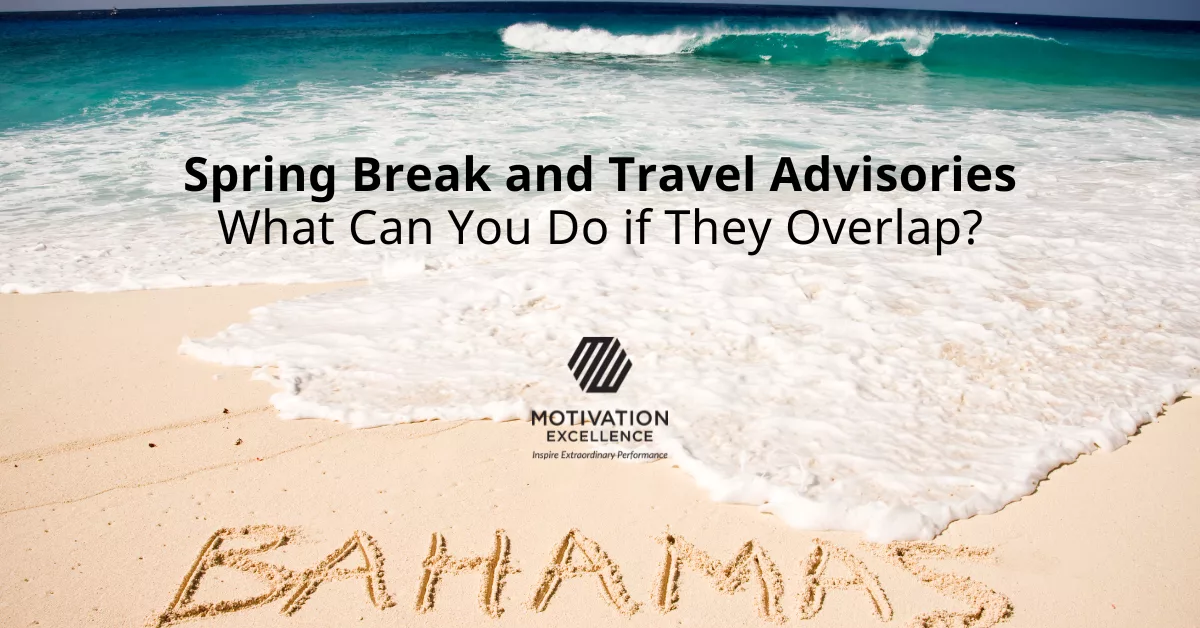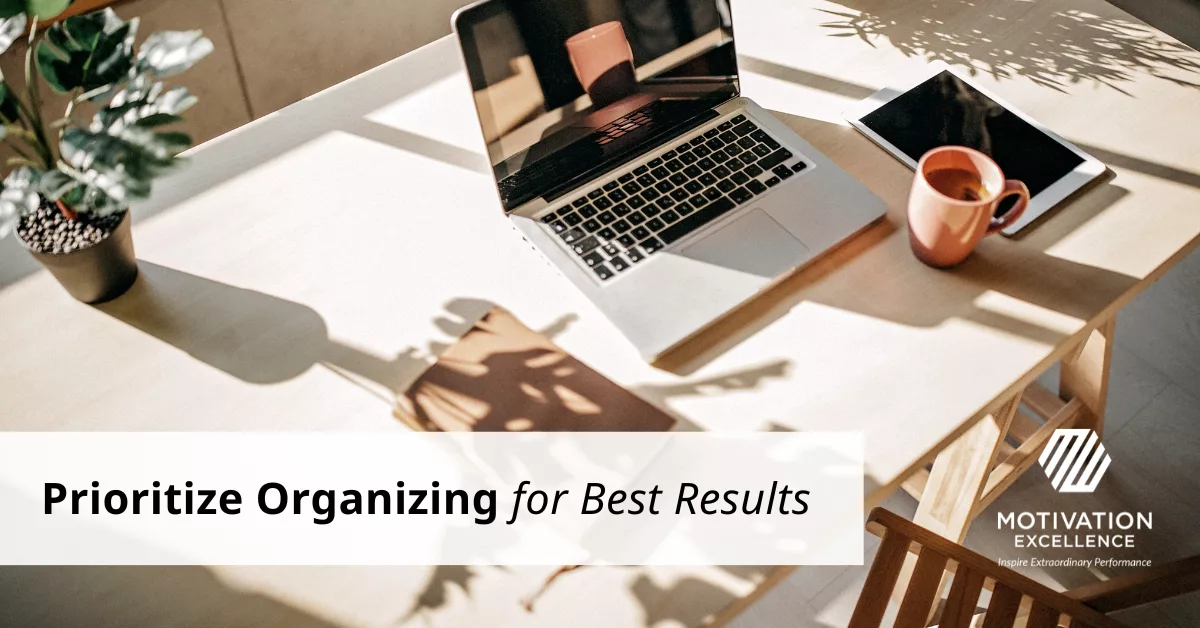Celebrating Herstory is a Win for Everyone!
In this blog, we will be highlighting some recent wins by women as well as shine a light on some women from the past you may not have heard about before.
At Motivation Excellence we have a lot to celebrate when it comes to women. Nearly 75% of our entire team is female, including 83% of our salespeople and half of our top leadership positions. The latter is by design too.
“When I bought the company in 2018, I made it a priority to make sure we had women in leadership roles after decades of having a vast majority male leadership team. Most of our staff has been women for a long time, they should be represented at the top levels too,” says Owner and President of Motivation Excellence, David Jobes.
He adds, “The key to having a successful business is to have good representation of the industry you’re in. Adding diversity of thinking to your leadership team filters down through the organization. By developing a diverse team, it allows you to explore options and generate new ideas that differentiate you in the marketplace and create opportunities for everyone.”
Great for Business
Jobes is not alone in seeing positive results with women in leadership positions.
According to an article published by the American Psychological Association, there are decades of research that show women leaders improve productivity, collaboration and fairness. The Peterson Institute for Professional Economics published a study nearly ten years ago that women in corporate leadership roles can significantly increase profitability.
Speaking of profitable women, let’s look at the blockbuster hit of last year. The “Barbie” movie was the highest grossing film of 2023 IN THE WORLD, and is the most successful domestic and global release by Warner Bros. ever. Greta Gerwig became the first solo woman director to hit the $1 billion dollar movie mark. And to really shine a light on Gerwig, she is the first director ever (male or female) to have her first three solo directorial films be nominated for the Best Picture Oscar (Lady Bird, Little Women, Barbie).
Music to the Ears
While “Barbie” only won one Oscar this month, it was for best song, making Billie Eilish the youngest person ever to win two Oscars. She’s 22. She took over the record from another woman though. Luise Rainer had two Best Actress Oscars at the age of 28 back in 1938.
Earlier this year, another female musician, Taylor Swift broke Elvis Presley’s record for most weeks spent at Number 1 on the Billboard album chart as a solo artist. The new length of time to beat is now 68 weeks! Fellow mega-popstar, Beyonce, holds the record for most Grammys won in a lifetime at 32 golden gramophones. Both women hold multiple other top achievements too. It’s estimated both singers have contributed $10 billion dollars to the US economy in 2023!
Sports Stars
Moving over to recent sports feats, Caitlin Clark has broken some long-held records by women and men in NCAA sports, fittingly during Women’s History Month. She now has set the Division 1 records for most 3-pointers in a season and most points scored in a college career. Both of which were previously held by men. Outside of NCAA history, another woman, Pearl Moore, still holds the most points scored record for college basketball. Although unlikely, Clark could claim that one too. Either way – go women!
Staying in the sports realm, Katie Ledecky now has more individual world swimming titles than Michael Phelps, who was the world record holder. Interestingly, in long-distance open water swimming, women tend to have a slight advantage over men. The nearly 20-mile Catalina Channel route is one of the most consistently popular marathon swims in the world. The first person to swim both ways in one jaunt was a woman, Greta Andersen, in 1958. The fastest one-way times are held by women. In 1976, Penny Lee Dean swam from the mainland to Catalina Island in 7 hours and 15 minutes. In 2012, Grace van der Byl set the record for the reverse swim at 7 hours and 27 minutes.
Celebrate and Elevate
March may be Women’s History Month, but women make history every month of the year. Take a moment after you’ve read this blog, whether it’s March or not, and reach out to an important woman in your life and let her know you “see” her and how she’s impacted you. Be the person who lifts up women at work and in your personal life. As a woman, be an example for other women, no matter their age. When we consistently celebrate women’s successes, we pave the way for a brighter future for everyone!
Fencing Industry
Creating a must-attend event for top-performing customers and vendors helping boost average sales growth 230% over the first 12 years (and counting).
Business Issue
Our fencing industry client went through restructuring. They wanted to create a unified program to build stronger relationships with contractors and increase market share and loyalty with existing customers. As part of their vision, they also wanted to give their customers educational resources to strengthen their own businesses, as well as provide networking opportunities with other successful business owners and better access to company leadership.
Our Solution
We developed an interactive Buying Show weekend that incorporates a fun destination with top vendor partners in the fencing industry, in-attendance deals and financing specials on fencing products, learning and networking sessions, and world-class entertainment. Qualifying contractors’ incremental sales funds the event. We built a performance tracking website, created a robust engagement campaign and produced best practices webinars led by company leadership.

Number of attendees has grown 226% over 12 years. Attendees make up 71%+ of customer base.

Million $ Club contractors nearly doubled between 2020 and 2022. In 2024 it became the 3M $ Club, with an increase in qualifiers!

214% = Median growth
Increases in Sales Growth
230% = Average growth
263% = Top 25 average growth
Outcome
The Buying Show has become a must-attend event for our client’s top customers, with many checking in through the last month of the qualification period to check their status. Competition for top contractor rewards is intense. Our client’s parent company is thrilled with how this solution drove a rapid change in business relationships and revenue. This program started in 2012 and continues today.
HVAC
BUSINESS ATMOSPHERE
Following the lethargic recovery from the Great Recession, a
nationally ranked and independently owned HVAC and plumbing
distributor wanted to drive incremental sales and gain market
share with an energetic and engaging self-funded travel incentive
for their loyal customers and preferred prospects.
Creating A Solution
Working with our client’s financial and marketing teams, we examined historic
sales, GP, and growth potential to develop a meticulous and reasonable goal-setting structure and tracking system. Participants received credit for meeting their personalized goals and earned more credit when they surpassed them.
Self-Funded Travel Reward
We created a travel incentive program for each customer and their respective sales representatives and managers. Customers who realized their pre-determined incremental sales growth earned the award. By doing this, the entire program was self-funded. Including the company representatives on the travel experience strengthened the business relationships immensely.
Support For Success
We worked with each company sales rep and manager to create presentations for their customers and prospects. An online performance tracking platform allowed company reps and customers to view daily progress to goal. This fostered engagement between the customers and the sales team. Customers, prospects, sales reps, and managers received monthly electronic reports and updates.
Rewarding Results
The revenue and profit growth for the enrolled participants outperformed non-enrolled participants from the inception of the travel incentive program. Over a time of five years, the quantity of travel award winners grew from 75 couples to 250 couples. By establishing an ongoing self-funded travel incentive program, our client has realized real growth and market share gain, a recognized increase in loyalty, and enhanced relationships with their customers and sales team members.



Spring Break and Travel Advisories – What Can You Do if They Overlap?
You’ve probably seen recent news stories about Americans being the victims of serious crimes on a couple of Caribbean islands. Currently the U.S. Department of State has travel warnings out for two prime locations for spring break revelers: The Bahamas (level 2) and Jamaica (level 3). For a full list of travel advisories worldwide visit their website.

(Department of State Travel Advisories Image)
What does this mean if you’ve already booked your tickets to one of these destinations? You likely will not be able to get a refund for your airfare or resort just because of the advisories. So, what can you do? Joe Reise, Motivation Excellence Director, Travel Purchasing, Planning and Supplier Relations, shares several tips to travel safely no matter the location.
“When traveling alone without the assistance of a professional travel staff like we provide for our incentive travel groups, arming yourself and people back home with important information is key,” Reise says. “Share your itinerary, flight numbers, hotel address and phone number, with someone you trust who is not traveling with you.”
Planning Stage
Reise has a few other recommendations for travelers as they’re planning their journey.
- Buy travel insurance. We recommend Travelex. This will give you better refund options if you cancel your trip for whatever reason.
- Register with the Smart Traveler Enrollment Program. This is a free service that alerts the nearest U.S. Embassy or Consulate of your travel plans. In return, it gives them the ability to contact you in case of emergency.
- Save the Department of State overseas contact number in case of trouble: 202.501.4444. They can assist in getting you to the proper resources for help.
Leading Up to Travel
As you get closer to your departure date, you can do some research to help ensure a smoother transition from everyday life to vacation life. Reise says it’s not very time-consuming and will really help if you run into unexpected situations.
- Use Google maps to get familiar with the area around where you are staying. Look for the nearest police station and medical facility. Are there any landmarks near your hotel that will help you navigate back there if you get lost?
- Save the contact information for the nearest U.S. Embassy or Consulate. Officers are available 24/7 for emergency assistance.
- Know the reputable taxi and rideshare companies for your location. Tripadvisor, Fodors, and other travel websites often have location-specific articles you can search for online.
Enjoying Vacation Time
There’s nothing quite like that first day of vacation to put you in a relaxed state. Reise says relaxing is great, but for maximum quality time, take some simple precautions.
- Watch what you drink. Know if the local water is OK. NEVER leave your drink unattended. Don’t overdrink alcohol.
- Pay attention as you travel from your resort into town. Look for those landmarks you spotted on Google maps. Travel in pairs, or more, when you can. Only take reputable transportation.
- Have your resort name and address written down on a card when you leave the property.
- Memorize or write down key phrases in the local language like:
- I’m lost.
- Please help me.
- Do you speak English?
- I need a doctor.
- Designate a meeting spot if people get separated.
Whether you’re heading out on spring break soon, or looking to travel later in the year, proper planning before you go and simple precautions on-site will make your adventure safer to take and easier to enjoy. Happy travels!
Get to Know ME with Steve Chemello
Steve Chemello is our Get to Know ME employee spotlight for February. It’s our shortest month and as you can see below, his answers are short and sweet too. Thanks, Steve, for giving us a tiny peek into what makes you, you!
What’s your current title and how long have you been in the incentive industry?
I’m a developer. It will be eight years in April.
What do you like about your job?
Building systems and applications is enjoyable for me.
What’s something you want to share about the people you work with at Motivation Excellence?
I enjoy working with them.
What motivates you to accomplish things in your life (work or personal)?
Work == Money. Personal == Family.
What do you enjoy doing outside of work?
I love to go sailing in the summer.
One thing that always makes you laugh is?
George Carlin stand-up is still great today.
Of Course You Need a Personal Brand! Here’s Why (and How).
Have you ever sat down and really examined who you are? Your core values, adjectives you’d like used to describe you, your biggest strengths and why people should want to connect with you? If you’re looking to establish a personal brand, this is a must. You, as a brand, encompasses:
- who you are
- what you stand for
- why people should care
How do you want people to feel when they see you or hear your name? For this blog, we’re examining how to establish your personal brand and why it’s important for nearly everyone these days. It becomes something you carry with you in-person and, increasingly, in our digital worlds.
Reputation + Brand = Past, Present & Future
Jeff Bezos, Amazon founder and billionaire, is credited with saying, “Your brand is what people say about you when you’re not in the room.” I’d say the vast majority of us would like those words to be kind and positive. There is work involved to get to that point, and it goes beyond your reputation. Harvard Business Review posted an article that says your reputation is tied to your past actions, while your brand is about visibility and the values you represent. In other words, don’t rest on your laurels. Be intentional with who you are going forward.
Allie Barke, of Allie Barke Social Media Marketing, has made a business out of her own branding, and also helps other companies capture that deliberate marketing space. She’s our social media partner, in fact!
“I started a fashion blog back in high school (15 years ago!). I started with just a website, then as social media became more popular, I joined Instagram and grew my presence there. My experience in branding/promoting myself led to various internships and jobs in digital marketing. What started as a fun creative outlet led to my work helping businesses, large and small, with their digital presence,” says Barke.
In today’s highly digital age, Barke insists everyone needs to be aware of their personal brand, even if they don’t think they have one.
“Your digital identity is part of (and I would say a significant part of) your reputation. Good or bad, that’s the reality nowadays. If you have no digital footprint, that’s saying something in itself. If you’re applying for a job, the recruiter is Googling you. If you’re going on a first date, that person is probably Googling you. If you’re a business, your customers are searching for you online too.
The data is compelling: 9 out of 10 people will look up a new business online before visiting; 1 in 4 consumers are very unlikely to visit a business that doesn’t have an online presence.”
Follow in These Footsteps
Universally, the first step to creating a brand is answering some simple questions, like:
- What motivates you?
- What’s your inspiration?
- What are your goals?
- What makes you unique?
- Why are you valuable in a certain space (work, community, etc.)
It can definitely seem a bit overwhelming as you begin. Keep your answers short and simple, then build more depth later as you discover nuances you hadn’t realized existed. Barke gives these tips as reminders to keep you on task:
- Focus on what makes you unique.
- This could be in your career or personal life, or both. A mixture of the two is often the most interesting!
- Share what you’re passionate about.
- It makes the whole process easier, and you’ll come off as more authentic.
- Don’t worry about pleasing everyone.
- A smaller, more engaged audience is often better than going too broad.
- Don’t be afraid to get vulnerable or use humor.
- Remember that on any platform, people first and foremost, want to be entertained.
It’s a Process to See Progress
Developing a personal brand does not happen overnight. Take it in chunks:
- get through your simple questions
- define your target audience
- know your goals
- select the medium best fitted to your needs (email, social media, website, etc.)
As for the medium, when it comes to social media options, Barke suggests concentrating on one or two platforms at first. “It’s easier to grow your brand when you focus your attention on learning the ins and outs of two platforms vs. four.”
Two final points: One, personal branding needs to be authentic. Just like a product that doesn’t live up to what it promised, if you fake who you are and it comes out (it always comes out), you’ll be labeled as disingenuous. That can result in losing a job, getting dumped or any number of negative outcomes online. Instead of having to rebuild trust, be truthful from the beginning.
And, two, make your branding a regular habit. Not only does it solidify how people react to you, but consistency also builds momentum. That tide of goodwill can carry you further toward your goals, with a lot less energy on your part. Good luck!
Prioritize Organizing for Best Results
A lot of us start the New Year (or new month, or new week… you get it) with intentions to get and stay organized. We’re here to help with that task, and since it’s apropos, this blog is organized into sections so you can skip right to where you want to go! But first, let’s get to why being organized is helpful. Mindtools.com says being organized has a big impact on your overall success. Motion, a digital planning software company, says organization directly relates to quality of life too.
Here are some reasons to get organized this year:
- Increases productivity
- Boosts focus
- Lessens stress levels
- Ignites creativity
- Improves mental and physical health
Okay, let’s get started! Peruse the sections below to get the most out of what you need from this assemblage of organizational tips. Many of them come directly from our team at Motivation Excellence. Most of us juggle multiple client projects at once, from group travel preparation and planning to reward sourcing and fulfillment.
How to Stay Organized at the Office
Alison Gavitt is on our sales team. As a Strategic Account Director, she has daily tasks that involve multiple clients, as well as prospects. She subscribes to the Touch It Once principle. The gist is that when something crosses your desk or laptop, you deal with it right away. This could mean fully completing the task it indicates, or making a decision on how best to move it to the next stage of completion. This cuts out a lot of wasted time when you start something, move onto something else, then come back to the first thing and have to re-familiarize yourself with the details of the project.
Alison: “It encourages immediate resolution and action and helps to keep my workday on track and my desk clean!”
Trisha Neff is a Tech Project Manager in our travel department. She finds herself juggling multiple travel programs at once and says multi-tasking is not her friend. She concentrates on one portion of one program at a time.
Trisha: “What I like to do is make a start on each project one by one, so then when I come back to them later, I find that completing the tasks are much easier since I’ve already started them. Sometimes I’m even pleasantly surprised at how much I got done initially.”
Keep a To-Do List
Lilly Jobes and Brittany Cerrillos are Travel Program Coordinators, and despite being in their 20s, both like putting pen to paper rather than keeping digital to-do lists.
Lilly: “I like to create one just about every day to keep me focused on the most pressing tasks. I feel a weight lifted off my shoulders when I get to cross a task off.”
Brittany: “Writing things down helps me remember, and it is something on my desk that is visibly ‘open.’ I love using sticky notes too. They help me keep certain tasks at the front of my mind.”
Michelle Lien-Burdick is our Merchandise Buyer. She touches any of our programs that use gifting as part of their reward structure. She is also part of our customer service team, so she has long term projects and immediate action items she needs to do daily.
Michelle: “I mark my Outlook calendar if someone owes me something, or if it’s the date I need to place an order for a program. I also keep all my notes for a program as organized as I can whether it’s digitally in a master spreadsheet or hand-written on a printed-out email request that I then file. This helps me get caught up to speed without a lot of searching to figure out where the conversation left off.”
Home Sweet Home Organization Tips
There’s a lot of overlap between the office and home nowadays. Organization is paramount in this situation as you don’t want your 12-year-old accidentally bringing your presentation notes to school instead of his math homework. Indeed.com gives 20 tips to successfully balance the work-home scenario. They include:
- Sticking to a work schedule
- Carving out a work-only space
- Focusing on one task at a time
- Finding a planner that works for you
For Allison Stewart, our sales support assistant, who works a hybrid schedule, the last item on that bullet list is critical to her.
Allison: “Documenting event details (date, time, location, etc.), especially twice, is helpful for me since I have a photographic memory. This way, whether I am at work or at home, my calendars are updated & synced.”
Having access to a cloud server is important when you’re working from multiple places. At Motivation Excellence, we try NOT to use paper as much as possible, so using digital methods like OneDrive or Google Drive help ensure documents we need can be found on any of our devices in any location (Wi-Fi is important to this too).
The Spruce, a home improvement publication, says having an organized home (that stays that way) is possible with a little forethought. They suggest starting with a list of each room in your house and then what needs to be organized in each space. Must-haves for this include drawer dividers, hooks of every variety and a label maker.
The lifestyle magazine, Real Simple, suggests getting over the procrastination hump of organizing your home or office by creating a card deck. Each card states a room or task that needs to be taken care of. Each day, pick a card and get started! They also suggest setting a timer for each task. You can set it for a specific length of time and dedicate yourself to organizing until the alarm goes off, or you can start a stopwatch when you begin a task. Often, they say, a task takes much less time than anticipated!
Inside Your Mind – How to Declutter Your Thoughts
Okay, now we’re getting personal! What are the best practices for organizing thoughts? The Order Expert says you need to convert your thoughts into physical form to start the organization process. So, yes, grab that pencil and notepad, or open up a new Word doc on your PC. Once you get your thoughts, ideas, worries, goals, etc. down in words, they become much more actionable.
Some other ways to help move your mind from a cluttered swirl of incomplete concepts to a more streamlined place of peace include:
- Cleaning up your physical surroundings
- Delegating tasks (whether at home or work) to a teammate
- Using time management skills
- Identifying long-term goals and the steps needed to reach them
Nowhere is a cluttered mind more evident than in reading an email! Trisha, mentioned in the above “At the Office” section, uses this tip to keep her mind and her emails inline.
Trisha: “For lengthy or important emails, I compose them without the TO and CC fields filled out. Even when I’m replying, I remove the recipients in the address fields until I’ve double-checked that the email is ready to send, and then add in the recipients. You only have to accidentally send ONE email before it was ready to go to know this is helpful!”
Wrapping it Up
We could go onto other areas that need organizing (how does the interior of your car look?), but we’ve covered enough for this blog. Of course, how organization looks is in the eye of the beholder. Our favorite messy genius, Albert Einstein, is credited with saying,
“If a cluttered desk is a sign of a cluttered mind, then what are we to think of an empty desk?”
You must decide what works for you. If you find peace working inside what some would call “cluttered chaos” then, by all means, continue. Most of us are somewhere in between “a place for everything, and everything in its place” and giving into a tornado of jumbled disorder. At least now, if you’re looking for a roadmap to the tidy land of organized bliss, you’ve got it!
Travel Destination Fascination in 2024 & Beyond
We recently wrote about our take on the strength of incentive travel in 2024 (spoiler, it’s good!). With a mixture of some client budget caution during an election year, expected rising levels of hospitality service, and stabilizing domestic airfares, our team is confident 2024 will be the first year in several to look and feel more calm, cool and collected.
Things Are Already Bustling in 2024
Our sales team is already busy with site visits (Australia, among others) and programs operating in warm weather areas in the Caribbean. Our travel planning team has barely been able to come up for air as they continue to be tasked with knocking out proposals for a wide variety of destinations around the world.
Hot Travel Destinations of 2024
Looking at 2024 destination selections, we’re seeing our clients choose a blend of “tried and true” domestic favorites like Las Vegas, Napa and San Diego, and some “new to them” but well-known to be incredible experiences like European river cruising or the classic luxury of U.S. resorts like the Montage Palmetto Bluff in South Carolina. Most popular destinations close to home continue to be all-inclusive resorts in Mexico and the Caribbean islands.
The hottest international incentive travel destinations we are seeing based on demand and availability this year are European river cruises because of the number of cities people can explore and the wide variety of rivers offering excursions (Danube, Rhone, Rhine, Douro, etc.). Costa Rica and Japan deserve mentions too.
Get Your Passports Ready for 2025 and Beyond
Pushing out to 2025 and 2026, Joe Reise, our Director of Travel Purchasing, Planning, and Supplier Relations, says clients are looking for our recommendations on destinations they’ve never taken a group to before.
“We think the demand for international travel will continue as we already have programs going to destinations such as Paris and Argentina in 2025. We continue to propose Europe, Asia, and South America for 2026 programs to clients as well. What we are seeing is a desire to travel to new places, but instead of being destination specific, clients are asking us to stay within certain parameters like finding an all-inclusive option, staying in North America or giving different river cruising suggestions,” says Reise.
Future Destinations of Popular Demand
When clients are asking about specific destinations for the future, we’re hearing a lot of interest in places like Costa Rica, Banff, Europe and Asia. Our team is recommending Thailand for its friendly people and diverse culture, Canada for favorable exchange rates and second-tier cities in Europe because they’re more budget-friendly.
“We have a client going to Florence, Italy. This client has never thought it was possible to go to Europe and up until now had only done all-inclusive resorts in the Caribbean, Costa Rica and Mexico. We completely changed the way they structured their itinerary and inclusions and kept within their budget by using a second-tier city like Florence during low season. The change in destinations is a huge appeal to their participants. The reaction has been amazing,” reports Reise.
Going On Your Own
If you’re looking for a destination for just your family to explore in 2024, our well-traveled team is really high on a few options right now.
- The Cyclades, Greece is an island group that includes Mykonos and Santorini. It’s gorgeous! Look for new flights and some hotel deals in 2024 and make this a must-see destination.
- New Zealand or Ireland are solid choices due to the people, the language, the upscale lodging options, the natural beauty and the variety of activities.
Reise is a big fan of picking an experience over a destination to keep to a specific budget. If you know you want to stay in the U.S. and great shopping is a must, you’ll have many cities to keep an eye on for flight and hotel deals. If you know you want to lounge by a pool in a hot climate but you don’t care if it’s in Arizona, Florida or Southern California, get alerts on deals in all three areas and pick the one that comes in at the best price for your time frame.
Traveling is back, enjoy it!
Incentive Travel Will Be Strong in 2024 with Some Caveats to Consider
We’ve had a lot to talk about over the last four years in our incentive travel industry! 2023 was packed with programs that had to be rescheduled from 2020 and 2021. As we close out this year, and rev up for next year, there are a few key areas to keep an eye on in 2024. And they apply to single travelers, as well as incentive groups.
An Election Year
With 2024 being an election year, businesses are prone to be a bit more cautious with their spending budgets. Rhonda Brewer, VP of Sales at Motivation Excellence, says this doesn’t mean there will be drastic changes to the incentive travel landscape, but certain trends might arise for new bookings.
“How this translates to the world of incentive travel may mean selecting destinations closer to home, seeing reductions in budgets, and finding partners who can provide extra value through stretching their dollar further.”
More stringent rule structures could also come into play, as companies start requiring higher performance goals to qualify for incentive group travel. Despite the more cautious approach, Brewer says overall incentive programs are in a good place.
“What I am most excited about is the fact that incentive programs are alive and well and clients still absolutely see the value in them. Now that rebookings are behind us, there is a tremendous amount of opportunity to look at new venues, destinations and inclusions.”
Flights & Service Levels
2024 is looking like a big year for the general public wanting to travel. Brad Hecht, Motivation Excellence Senior VP of Travel and Chief Travel Strategist, and his team are constantly looking at trends in airfare as they book travel for our group incentive participants. In the coming year, he predicts steadier pricing trends, especially for domestic destinations.
“Airfares will continue to stabilize, especially for U.S. travel, as projections will continue to trend to record numbers for travelers.”
Travel & Leisure published an article referencing Kayak’s 2024 outlook on airfares, which showed that domestic flights could steadily drop up to 16% next year. The same report, however, states ticket prices for international travel look like they’ll increase 10% in 2024, over 2023.
Along with domestic travel being more affordable, Hecht is looking forward to higher service levels at hotels in the United States.
“Hotels are continuing to ramp back up from the pandemic with their staffing, so I’m hoping for more consistent service levels.”
Brewer adds that clients are looking for that too. “The expectation in 2024 will be that all staffing levels have been ironed out and properties will be fully operational in their on-site restaurants and spas.”
Visa Updates
We’ve all heard that Americans traveling abroad in 2024 might need to add a visa to their passport. For travelers to Europe, the visa requirement that was originally going to roll out in 2024, has been delayed to 2025 at the earliest.
“The new ETIAS travel entry requirement won’t be in effect until after Europe’s new tech-driven entry and exit system is launched in the fall of 2024. And then even after that, there will likely be a six-month transition period,” says Joe Reise, Director, Travel Purchasing, Planning, and Supplier Relations at Motivation Excellence.
There are countries now though that already require Americans to have a visa to enter. They include Brazil, Australia, China and Vietnam. For a full list of countries requiring a visa, Reise recommends visiting this website: Travel.State.Gov
Wrap Up
Between flight prices, hotel service levels and visa requirements, Americans have a lot to consider as we start dreaming about our next travel destination. If you can take advantage of lower domestic airfare and higher U.S. hotel service levels, and earn it through your company’s incentive program, you’ll hit a trifecta of travel gold!
Motivation Excellence, Inc is an incentive company dedicated to helping our clients Inspire Extraordinary Performance. We do this through personalized rewards, aspirational group travel, performance tracking and wow-worthy meetings and events. Headquartered outside of Chicago, we have another full office in Traverse City, Michigan and remote offices across the country.
Make Reflection a Reflex All Year Long
December is a natural month to look back at your year and take note of the good, the bad and the ugly. Reflecting much more often, though, is associated with many benefits for your personal and professional worlds. Let’s dive into this amazing soft skill that can create waves of positive changes when incorporated regularly into your life.
Create a Better You
Betterup.com writes that the value of self-reflection is its ability to show you what’s working well in your life, as well as what needs to be adjusted. When we reflect, we’re really letting our internal emotions, behaviors, and motives stare straight into a mirror only our mind can see. It can be daunting, especially when we reflect on situations that made us angry, sad or generally uncomfortable. But confronting those times is critical to understanding how to navigate them more smoothly in the future. You get a fresh perspective without the intense feelings, which helps facilitate a better understanding of what happened and why you reacted the way you did.
The Better Up article tagged above is full of self-reflection questions to ask yourself, prompts to ignite inner thoughts, and tips on how best to use reflection as a great tool for better self-awareness. In fact, self-awareness (we wrote about it before) and self-reflection go hand in hand.
Make It Your Business Model
Harvard Business Review published an article describing research that shows the ability to reflect well separates the extraordinary professional from the mediocre. Without reflection, other soft skills like empathy, emotional intelligence, and communication will fail to be as impactful. By the way, these are key indicators of a person’s potential to be a great leader.
HBR regular contributors James R. Baily and Scheherazade Rehman asked 442 executives to reflect on instances that most advanced their professional development. With great candor, they spoke of both the embarrassing and the triumphant. Baily and Rehman found that three sentiments were repeated most often and had the most value for career growth:
- Surprise – the unexpected, good or bad, is always worth reflection
- Failure – public (and private) mistakes offer learning opportunities
- Frustration – delays in meeting a goal can lead to improvements
Overall, being able to recognize when things didn’t go well, AND celebrate when they did, creates opportunities for learning, innovating, and improving. Perhaps your company does performance reviews at certain intervals. This is a type of reflection that can generate discussion, goal setting, and course-correcting, and when done well, it can build a stronger relationship between managers and their teams.
Reflection in Practice
We know why reflection is important, but how do you implement it in a meaningful way? There are some general tips for starting and continuing this beneficial habit.
- Keep a journal and review it at solid intervals. It could be daily, weekly, monthly or quarterly, but it’s important to capture your reflections as they happen so you remember the circumstances clearly.
- Leave space to add retrospective notes to your journal. Hindsight being 20/20 is a side effect of reflection and a great way to grow or improve.
- Practice gratitude daily. Reminding yourself of your blessings helps bring positivity to all you do. Having a positive outlook creates a chain reaction of good feelings which can help most situations you encounter.
- Set goals so you know what you’re working toward and can measure your progress as you reflect on each step. What worked? What didn’t? Any unexpected realizations?
The words “reflect” and “reflex” are homophones. They don’t mean the same thing, but they can work together well. As you start to make self-reflection part of your daily toolkit, remember this sentence: She reflects so often, it’s become a reflex in most situations. That’s the goal! Make reflection an automatic reaction to master this method of self-improvement. Good luck!
